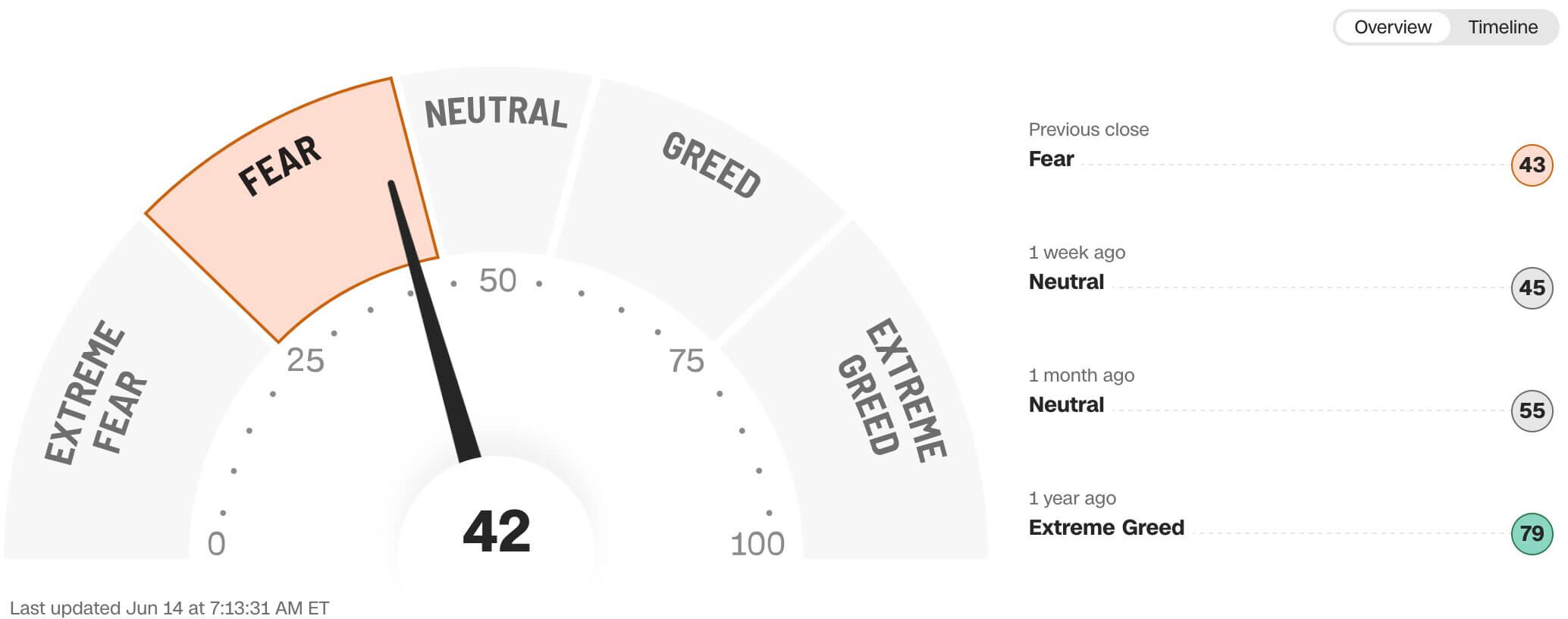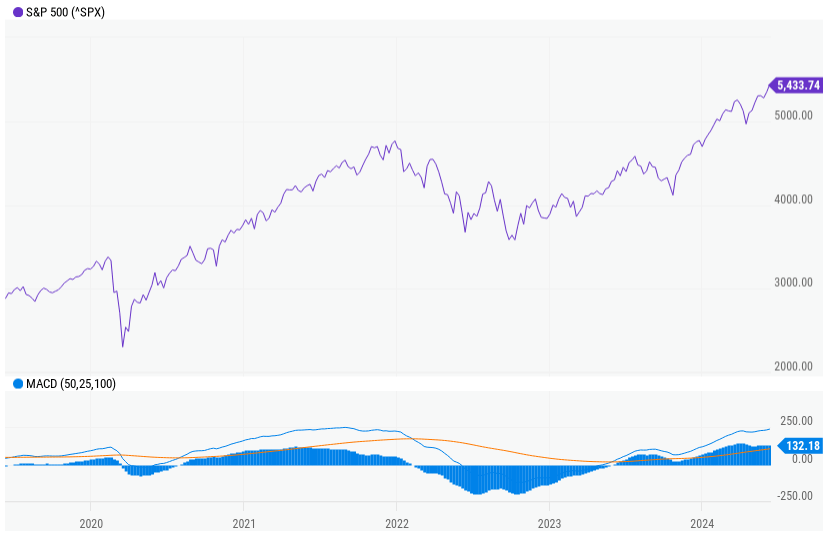Market Overview
This month's models have been posted. There are CHANGES in ALL MODELS (highlighted in yellow).
Time for an ‘insur-rection’?
Your homeowners insurance premium went up this year. You must’ve seen that coming, though, because this expense has been climbing for quite some time. Sure, inflation has a hand in this, but other factors are driving the cost sharply higher.
And it’s not just homeowners insurance. We anticipate that health insurance premiums ratchet up every year – but have you seen what’s happening with auto insurance?
Insurance is how we manage catastrophic risk. Has the likelihood that your home, your car, and your health will all be threatened risen that sharply in the past two or three years?
Yes, but that’s not the whole story.

The postapocalyptic Australia of Furiosa or the insurance industry’s vision of your ZIP code? Maybe both. Credit: Warner Bros.
And while it’s easy to make the insurers out to be the villains here, let’s avoid the temptation.
“Insurance companies insist they're just playing catch-up, after two years of big losses,” NPR reports. “For every dollar in home and auto premiums they collected last year, insurance companies paid an average of $1.10 in claims and expenses, according to the Insurance Information Institute.”
Home is where the mortgage is
Homeowners insurance costs rose 63% in Louisiana over the past year, according to CNBC. In Nebraska, they went up 61%. Count yourself lucky if your premium only went up 23%, the national average.
The number and intensity of hurricanes, floods, wildfires and tornadoes have been increasing year-over-year for some time through much of the United States. The increased risk of damage would be reason enough for homeowners insurance premiums to mushroom, but the scenario gets worse. That’s because the highest-risk communities aren’t just holding onto long-term residents; they’re welcoming new neighbors. These are exactly the places where most new construction is going on because these are where the jobs are heading. So, people are moving out of regions of lower inherent risk into regions that are regularly featured during the disaster block of the evening news. As a result, new homebuyers are increasing the risk of the entire pool, driving up premiums as a result.
But it gets even worse for the homeowner. We’re currently in a flat-out, all-hands-on-deck building boom. There aren’t enough construction workers or equipment or building supplies to handle the demand which, by the way, has never been greater. If you need a new roof, that adds another day of waiting for a new homebuyer. So, you – or, more precisely, your insurer – isn’t going to get off cheaply.
As a result, homeowners – especially those who’ve paid off their mortgages – aren’t keen to keep paying up.
“A survey by the Insurance Information Institute last year found 12% of homeowners had no insurance, up from 5% four years earlier,” according to NPR.
And there’s nothing the government can do about it, even if it should – which is debatable. Every state has a review board that approves insurance companies’ requests to raise premium rates. These boards have a right to say “no,” but they seldom do and for good reason. If an insurer can’t push through a rate increase, they will simply stop writing any policies at all in that state. Then homeowners insurance would go from painfully expensive to completely unobtainable. Florida is ground zero for that right now.
But what about the state a lot of readers of this space call home?
“Texas incurred $400 billion in damages in 2023, the highest among all states,” Insurance Business magazine reports, noting that’s $10 billion more than Florida. “The Lone Star State also ranked fourth in home insurance costs.”
The article forecasts that Texas’s homeowners insurance costs have run up as far as they’re likely to go for now, and might even decrease slightly over the course of this year.
Grand theft auto insurance
On average, it’s 17% more expensive to insure your vehicle this year than it was last year. Inflation accounts for 3.4% of that increase, so what’s up with the rest of it?
State Farm blames, among other factors, distracted driving. We’re not advising anyone to leave comments on TikTok while behind the wheel, but it’s far less fatal than old-fashioned speeding or drunk driving. By the way, the National Highway Transportation Safety Administration reported that traffic fatalities actually declined in 2023, and other data suggest that the total number of crashes was probably higher pre-pandemic. Miles driven certainly is. The number of fatalities is still higher than it was 10 years ago, but that raises the question: Why are the premium rates going up now rather than then?
It really comes down to how much a car costs to buy, and how much it costs to fix.
The cost to repair vehicles has risen at a faster rate than the overall consumer price index, with a noticeable spike since the pandemic,” Time magazine reports. “Then there are the cars themselves …. According to Kelley Blue Book, the average new car transaction price has risen by 21% since April 2021.”
CNBC notes that repair costs generally go up about 3.5% to 5% per year but saw a 10% jump in 2023. The report suggests that this has to do with such options as turbochargers and all-wheel drive systems.
One last factor is auto theft. While the frequency of this crime inched up only about 1% last year, it’s up about 25% since before the pandemic.
Ultimately, though, we’re at a loss to explain this. We’re experts on money, but still don’t fully understand why your – and our – auto insurance rates are spiking so high right now.
Regaining control
So, what can you do? Frankly, not a lot. But that’s not nothing. Here are some suggestions that apply to home and auto policies, and we’re assuming you already have a top-shelf credit score:
- Shop around but consider retention programs. Insurers compete hard, and they constantly reevaluate which markets they want to increase their presence in. Don’t let brand loyalty bind you to an underwriter who’s taking your business for granted. If your insurer gives you a discount for being a long-time customer, though, find out what they’re willing to do to keep you in the family.
- Set a higher deductible. The more you’re willing to pay out of pocket if something goes wrong, the less you have to pay every month that something doesn’t.
- Bundle. Many insurers will give you a discount if you buy two or more types of insurance. In a lot of cases, it makes sense to get your auto and home policies through the same company.
- Look into group insurance. Membership in a professional guild, chamber of commerce, alumni association, social club or other affinity groups might qualify you to participate in a group rate.
We can offer some guidance about homeowners insurance in particular:
- Make sure the insurer can pay out. Anyone can take your money, but not everyone will be in a position to buy you a new house if your old one lands on the Wicked Witch’s sister. Make sure your policy is backed by a company with an A.M. Best rating of A+ or better.
- Know what is and isn’t covered. Is it just the structure, or do you have a personal property rider on it? The art on your walls might be worth more than your house. If you have a 1952 Mickey Mantle Topps card in mint condition, it absolutely is. But if you’re not much of a collector, then you can probably do without the rider.
- Install protective devices. Ask about any savings you might qualify for by taking preventive measures to protect your home. Some insurers offer discounts for smoke detectors, fire alarms, water sensors, interior sprinkler systems and smart home protection devices.
And here are some auto-specific tips:
- Keep shopping around. Auto coverage is notoriously price-volatile. CNBC recommends you compare your policy against the market as often as every six months.
- Check your driving record. Higher rates due to accidents or violations are supposed to drop off after three to five years. But maybe they haven’t. Your insurer might be – intentionally? – unaware that you qualify for standard market rates. Couldn’t hurt to remind them.
- Take advantage of discounts. If you’re willing to take a defensive driving course or have a safety monitoring device installed in your vehicle, your insurer would probably give you an incentive to do so.
- Pay off your car. If you own your vehicle free and clear, then you won’t be bound by any covenants with the lender or leasing agent requiring you to take out comprehensive or collision coverage. Then you can just pay for the injury and property damage liability that your state requires.
- The sooner you retire, the sooner you stop commuting. When you’re no longer putting on the miles going to work, your auto insurance agent should be among the first people you tell.
- Trade in for a safer vehicle. There are some perfectly prestigious vehicles that are less accident-prone and hence cheaper to insure. The Insurance Institute for Highway Safety says exactly what you expect it to say about SUVs in general. Still, they break out five mid-size luxury models in that class that are likely to lower your premiums.
We barely touched on health insurance because that’s been rising steadily forever. Besides, most readers of this space have excellent insurance at group rates or are Medicare-eligible. If you’re still paying for premiums out-of-pocket, you might consider dropping down to bronze-level coverage and funding a health savings account. If you’re perfectly healthy, you could even go the next step and take out a bare-bones “catastrophic” plan. Also, if your healthcare costs – including premiums -- exceed 7.5% of your adjusted gross income, you should be itemizing your tax deductions.
For what it’s worth, you’re probably eligible to buy policies via an Affordable Care Act exchange if you’re under age 65. Lots of people with high net worth do so, and some even qualify for the “advanced premium tax credit” subsidy despite making six-figure incomes. At least consider going through the exercise of comparison shopping. And keep an eye out for an opportunity to enroll in an individual coverage healthcare reimbursement arrangement, or ICHRA. This gives you the freedom to pick any plan on your ACA exchange – which will likely have more options than your workplace menu – and have your employer pay you back for some or all of your premiums.
Aside from all that, you might want to compare prescription drug coverage when selecting your healthcare plan. This is an arduous task that will likely take you a couple hours but, if you’re taking any meds that are still under patent, this exercise could net you hundreds if not thousands of dollars per year. And one last thing: Think about whether you really need dental or optical coverage. You might be better off paying for these services in cash.
Lastly, recognize that you can’t beat ‘em, so you might as well join ‘em. Insurers and reinsurers are for the most part publicly traded companies and it’s as simple as a mouse click to place a bet on one. Such names as Travelers (NYSE:TRV) and Allstate (NYSE:ALL) recently posted record profits, while Progressive (NYSE:PGR) doubled its first-quarter earnings year-over-year.
Still, there’s a difference between placing a bet and investing. For strategic, analysis-driven insights, you might want to talk with a trusted financial advisor.





